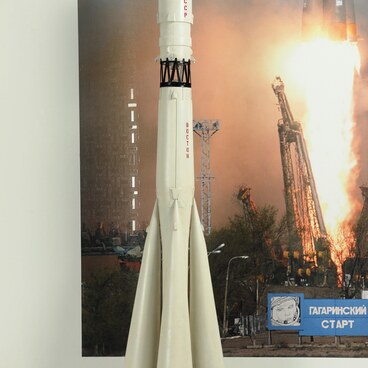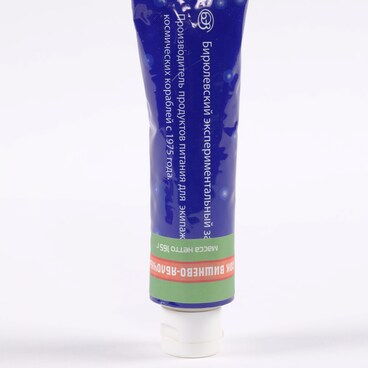The tubes of food which were commonly used at the beginning of the Space Flights Age are now largely out of use. The polymer packets are far more commonly used now for freeze-dried food which is packed in them. The second most popular is the preserved food in aluminum tins. Cosmonauts eat preserved stewed meat, goulash, fish, vegetables, Tatar-style meat stew, omelet, caviar, curd, cheese, desserts and various starters.
Space preserves
Creation period
2000 - 2010
Place of сreation
Ismailovo settlement, Moscow region; Moscow
Dimensions
5x10x5 cm
5 х 10 х 5 cm
5 х 10 х 5 cm
Technique
Industrial production
Collection
Exhibition
2
Open in app#1
Space preserves
#3
#4
The close to modern preservation technology was developed in Western Europe at the beginning of the XIX century. Originally the cans were made of iron sheets plated with tin. The tin layer protected the external side of the can from rust and the internal side from contact with the contents of the can. Later on, tins replaced the iron cans steel. The preserved food for cosmonauts is packaged in strong aluminum cans, because they are lighter than iron ones and are resistant to corrosion
#5
The preservation process consists of several stages. The prepared products are packed into 100, 200 or 350 g cans. To avoid rancidity, the melted butter is added to the food. The cans are then weighed and covered with lids, and the air is pumped out of the cans to a maximum extent using a vacuum pump. Then the lids are sealed and the cans are checked for airtightness in hot water. If a can is not hermetically sealed, the bubbles will come out of it. The final stage in the preservation is the sterilization in special devices (autoclaves) under high pressure steam at a temperature of up to 120°С for 40 minutes, or at a lower temperature for a longer time. The purpose of sterilization is to suppress vital functions of microorganisms and to boil the ingredients in the preserves without affecting their nutritional value. The preservatives and chemical additives are not used, however the shelf life of space preserves can be up to one year.
#6
The table at which the cosmonauts on the International Space Station eat is equipped with built-in heating elements. To warm up the contents of the can, it should be placed into the special cell in the table for a few minutes. Small cans are first placed in a special adapter. A standard can opener is used to open the cans.
#7
But these cans, like the tubes before them, may soon become a thing of the past. It is planned to replace them with containers made of lamister (aluminum foil coated with a polypropylene film. This kind of package weighs even less, can easily be jammed, and takes up less space in the trash container. The first dishes supplied in lamister containers were chopped bilberries, squash puree, dried apricot puree and a ‘Tasty starter’.
#8
Ministry of Culture of the Russian Federation
read morehide
00:00
00:00
1x
Space preserves
Creation period
2000 - 2010
Place of сreation
Ismailovo settlement, Moscow region; Moscow
Dimensions
5x10x5 cm
5 х 10 х 5 cm
5 х 10 х 5 cm
Technique
Industrial production
Collection
Exhibition
2
Open in app
Share



